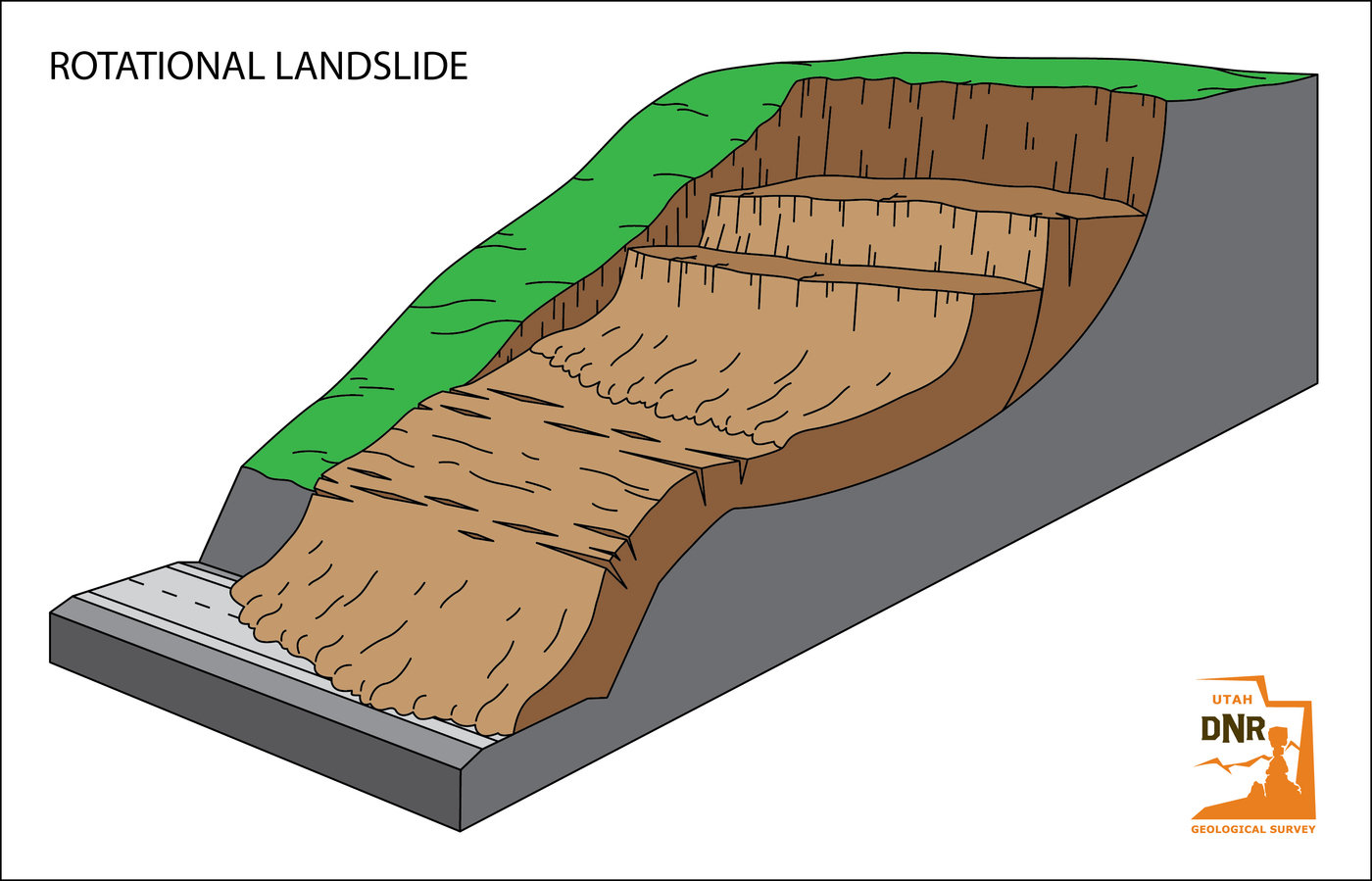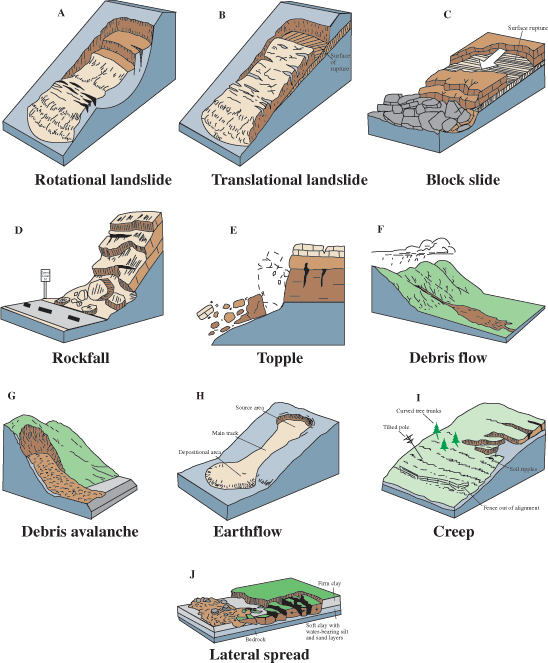11 Which of the Following Cause Mass Movement
C Rapid flow mass movements. An upheaval in height of slopes and gradient.

10 Mass Wasting An Introduction To Geology
Progressive where slopes are reaching.

. Gravity is driving force Water earthquake no vegetation 12. This type of mass movement involves blocks of materials moving along a rotational or curved surface. A pile of rocks that accumulate at the base of a slope.
Erosion at the base of a slope by geomorphic processes eg. Water is one of the major influences on the changing of landscapes by a. Haphazard elimination of natural vegetation.
Transport and deposition of sediment c. The snow cover of a volcano melts in the heat and mixes with the soil to form mud as the magma in the volcano stirs preceding an eruption. Which material makes up the majority of the suspended.
Debris avalanche can be included in which category. Which of the following types of mass movement takes place most gradually. All of the above.
Mass movements also occur on slopes in the ocean basins. Cutting down through the surface in which it flows 11. Former mass contains pyroclastic debris from a volcanic eruption 4 The type of mass movement shown in this drawing is a 11 rockslide.
What is the dominant force that causes mass movement. May flow if it becomes saturated with water. A slow slide of unconsolidated material that travels as a.
The process by which masses of rock and soil move downhill under the influence of gravity is called The process by which masses of rock and soil move downhill under the influence of. There are a number of factors besides gravitational pull that initiates mass movement. Will be more stable if vegetation takes root on the hill.
Seasonal where movement is within the depth of soil affected by seasonal changes in soil moisture and soil temperature. Water plays a role in sinking mass movements and mass movements on slopes. This type of mass movement involves large blocks of bedrock breaking off and moving downslope on a well-defined planar surface.
Removal of substances or load from over the original slope surfaces. Fluvial wave or glacial erosion c. B Slow flow mass movements.
The bent trees leaning utility posts and fences in this diagram indicate which type of mass movement. 3 types can occur - 1 Submarine slumps Coherent blocks break and slip similar to slumps on land. Which of the following mass movements is the fastest.
Loading of a slope at its crest d. Causes of Mass Wasting or Mass Movement. Many hill-slope masses are weak due to preexisting geologic conditions such as.
Which of the following mass movements is the fastest. Elimination of aid from below to substances above through natural or artificial means. Solifluction slump lahar debris flow rockfall.
Sudden movement of loose rock and soil down a slope of a hill mountain or cliff. It will cause fixed objects such as trees fence posts. 20 Questions Show answers.
Continuous where shear stress continuously exceeds the strength of the material. Increase the rate of compaction -. C Rapid flow mass movements.
The movement of rock fragments down an incline as a result of gravity. Remove all excess vegetation. Which is the force that continuously elevate.
This process may also be referred to as mass wasting. Cementation of sediment due to evaporation of moisture 12. Slow downhill movement of rock and soil.
From left to right. Volcanic eruptions many times causes huge mudflows. Both types of movements play a role in the changing of landforms.
Most slope failure can occur due to over-accumulation of sediment on slope or in a submarine canyon or could occur as a result of a shock like an earthquake. Identify the following types of mass movements by matching them with their appropriate labels. In other words the earths.
If a mineral changes to a different type it has experienced. Causes of mass movement. The accumulation of rocks at the base of a cliff is called _____.
Ancient slide surfaces rock layering dipping less than topographic slopes structures within the rocks such as fractures ancient faults and thin clay seams. Which one of the following is not a cause or a contributing factor to a landslide mass movement development. One of the most effective ways to stabilize a slope is to.
There are many activating factors preceding mass movements which are as follows. Heavy rainfall Dall of the above promote mass movement 6. Mass movement is the bulk movement of rock and soil debris down a slope in response to gravity or the sinking of the Earths surface in a vertical direction.
Mass wasting which is sometimes called mass movement or slope movement is defined as the large movement of rock soil and debris downward due to the force of gravity. Is stable unless over steepened by excavation. Weak sensitive or weathered geological materials b.
Of the following types of mass movements which can move fastest.

Pin By Nərmin Sariyeva On Topic Hardy Warrior Movie Posters


0 Response to "11 Which of the Following Cause Mass Movement"
Post a Comment